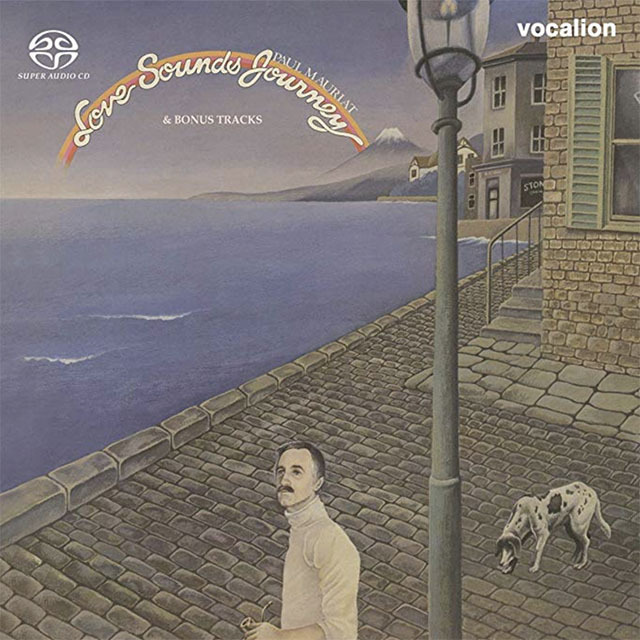
アルバム「Love Sounds Journey」はかつて日本でCDでリリースされたことがあります。Vocalionエディションのマスタリングサウンドは、その時のものよりも良くなっています。 ジャケットの写真は1976年にリリースされたオリジナルのLPに基づいています。今回、見開きページに描かれたイラストや解説もそのまま再現されています。
ジャケットに描かれているのは、富士山の位置と街並みからすると横浜でしょう。でもこの絵は日本の特徴的な風景ではありません。もちろん、実在の場所ではありません。街灯を大きく描いたり、ポールの後ろを犬が歩いていたりと、なかなかユニークな構図です。これはガス灯でしょう。横浜は日本で一番最初にガス灯が設置された町です。このジャケット・イラストの作者は記載されていません。
The album "Love Sounds Journey" was once released on CD in Japan. The mastering sound of Vocalion edition is better than the previous one. The picture of the jacket is based on the original LP released in 1976. The illustrations and commentary drawn in the facing spread pages are reproduced as they are.
The place depicted on the jacket seems to be Yokohama, considering the location of Mt. Fuji and the cityscape. But this picture is not a characteristic landscape of Japan. Of course, it does not describe real places. It is a very unique composition, such as drawing a large street lamp or a dog walking behind Paul. This is a gas light. Yokohama was the first town in Japan to install gas lamps.The author of this illustration is not listed.
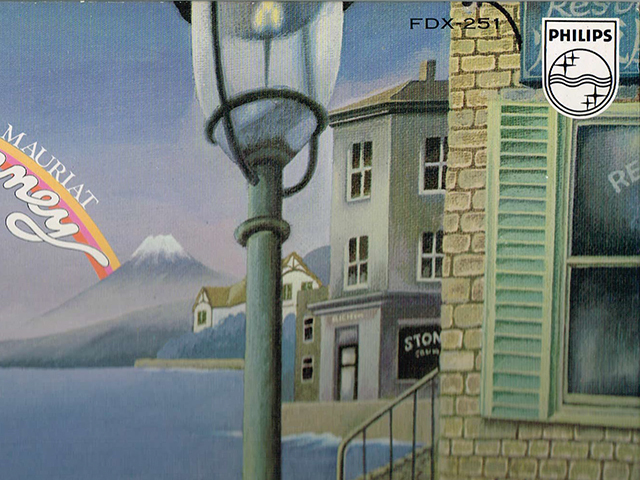
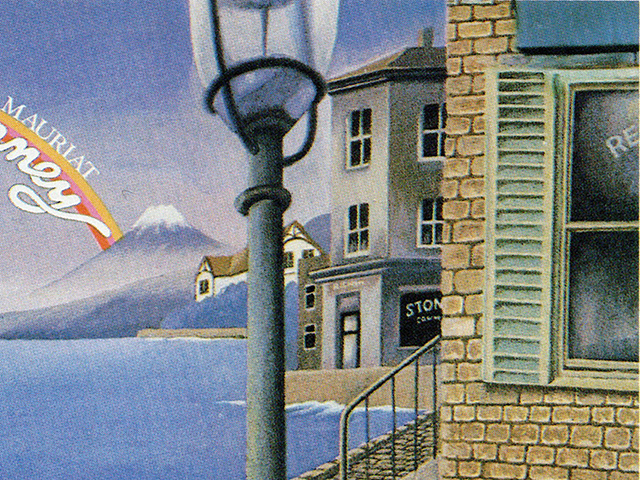
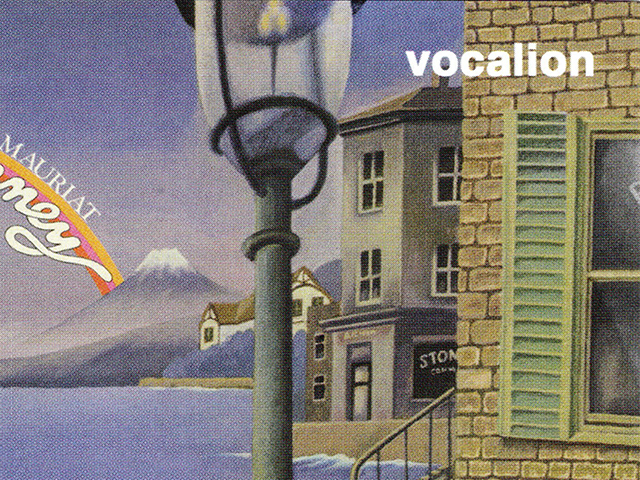
LPでは、PHILIPSのロゴマークがあった部分に看板が描かれていました。最初に CD化された際には、その看板は青い庇(ひさし)に変わってしまいました、そして、今回の CD化では、看板はレンガに置き換えられてしまいました。
看板をよく見ると、一番左が "火"と書かれていて、右端は"屋"と書かれているように思えます。建物が煉瓦でできているので「煉瓦屋」と書かれているのかもしれません。これはあくまで想像です。もちろん「煉瓦屋」は煉瓦を売っているわけではなく、レストランであるはずです。
ちなみに、東京の銀座には「煉瓦亭」というたいへん有名なレストランがあります。
A signboard was drawn at the part of the PHILIPS logo on LP’s jacket. When it was released on CD, the signboard was turned into a blue eave. And this time the signboard was replaced by brick.
If you look closely at the blue signboard, it looks like "火" is written on the left side and "屋" is written on the right side. Since the building is made of bricks, it might be written as "煉瓦屋". This is just an imagination. Of cource, "煉瓦屋 - Rengaya" is not selling bricks, it must be a restaurant.
By the way, in Ginza in Tokyo, there is a very famous restaurant "煉瓦亭".
<notes>
The kanji "屋 - ya" means "shop".
The kanji "亭 - tei" means "prestigious house".
The kanji with the part "火 - hi" has a meaning related to "fire" or "bake".
The kanji "煉瓦 - renga" means "brick".
煉瓦亭>http://ginzarengatei.com
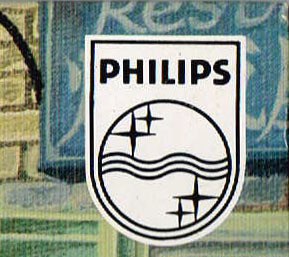
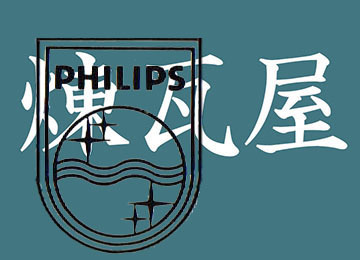
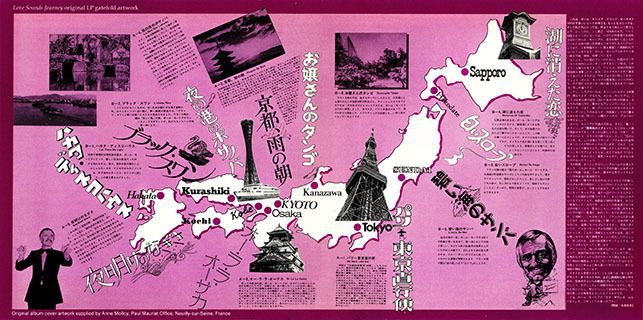
ポール・モーリアが 11の都市を選んだ理由を聞けなくなってしまったことが残念です。このアルバムが発売された頃、私は岡山県の倉敷市に住んでいました。だから、彼が倉敷を選んだことは大きな喜びでした。11の都市に住んでいるファンが同じ思いをしたことでしょう。しかし、1976年のコンサートが開催されたのは、倉敷市ではなく岡山県体育館という岡山市にある施設でした。そのコンサートで「ブラック・スワン」が演奏されたという記憶はありません。
We're sorry that not to be able to hear the motive why Paul Mauriat chose these 11 cities. When this album was released, I lived in Kurashiki, Okayama Prefecture. So it was a great pleasure for me that he chose my town. Fans living in 11 cities would have the same thoughts. However, the concert in 1976 was not held in Kurashiki-city, but at Okayama Gymnasium in Okayama-city. I don't remember that "Black Swan" was played at that concert.
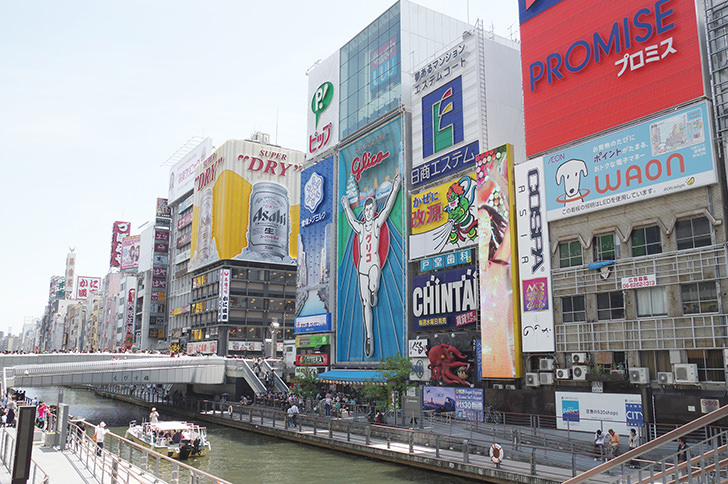
その頃、大阪にあるラジオ局では、「オー・ラ・ラ・大阪」のコマーシャルを盛んに流していました。地名が織り込まれた曲はこの曲だけだったので、大阪の人は、大いに喜びました。「この曲は、間違いなく、私たちのために作曲してくれた作品だ。」
「オリーブの首飾り」は大阪で最初にヒットしました。 大阪やその近郊に住んでいたポール・モーリアの多くのファンは、ラジオ番組で「オリーブの首飾り」をリクエストするため何千枚もの葉書を書いたといいます。 そして、長い間、ポール・モーリアの音楽は、JR大阪駅で一日中BGMとして流されていたこともありました。 大阪の人は彼の音楽が大好きで熱狂的でした。 それが、ポール・モーリアが日本での最後のコンサートに大阪を選んだ理由だと思います。 大阪フェスティバルホールに集まったファンに「ありがとう」を直接言いたかったのでしょう。
At that time, radio stations in Osaka were actively broadcasting commercials of “Oh La La Osaka”. This is the only tune that the place name is included in the song title, so the people of Osaka were very pleased. "Paul Mauriat definitely composed this piece for us!"
His biggest hit tune in Japan "El Bimbo" was first hit in Osaka. Many fans of Paul Mauriat, who lived in Osaka or its suburban area, wrote a lot of postcards asking to play "El Bimbo" on a radio show. And for a long time, Paul Mauriat's music had been played as background music all day at Japan Railway's Osaka Station. Osaka people loved his music enthusiastically. I think, that's why Paul Mauriat chose Osaka for his last concert in Japan. Probably he wanted to say directly "Merci" to fans gathered at the Osaka Festival Hall.
<notes>
Raymond Lefèvre fan club, which was split from Paul Mauriat fan club, followed the same approach. They wrote a lot of postcards and sent to same radio program and requested to play "J'Attendrai". The radio program name is "ABC Young Request" broadcasted by Asahi Broadcasting Corporation.
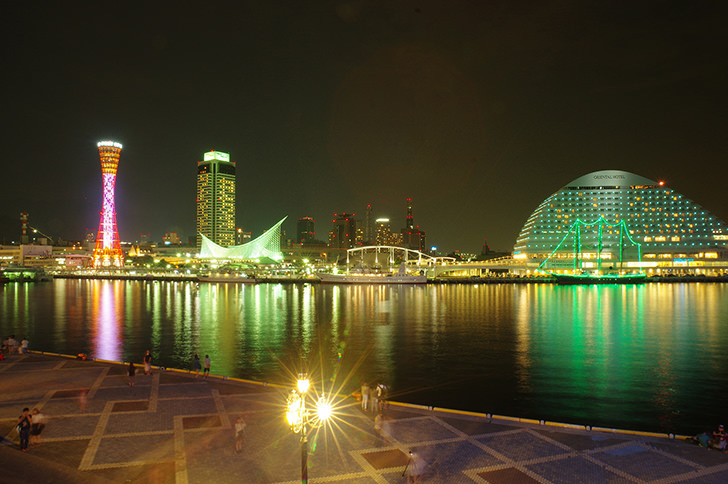
神戸は夜景が大変美しい港街です。 "La Baie Des Lumières"は、日本では「夜の港のボサノバ」という曲名で紹介されました。神戸は、日本で初めてジャズが演奏された街でもあります。この曲はフランスで発売されたオリジナル・アルバムにも収録されていますが、こちらのアルバムでは列車の走行音と鉄道唱歌のオルゴール音で曲が始まります。このオルゴール曲は、長距離列車で県庁所在地など大きな駅に着く際に、駅名を告げる前に流されるメロディです。ポール・モーリアは、鉄道での長い旅の末に神戸に着きました。彼は、港街の風景から神戸の姉妹都市であるマルセイユを思い出して、ひとときの安らぎを感じたのでしょう。
Kobe is a port city with beautiful night view. "La Baie Des Lumières" was introduced in Japan under the title "Bossa Nova at Night Port". Kobe is the first city in Japan played jazz. This tune is also included in the album released in France, but in this album, the music starts with train running sound and the music box sound of Tetsudo-Shoka. This melody is played at long-distance trains, before the announcement of the station name when arriving at a large station such a prefectural capital. Paul Mauriat arrived at Kobe after a long train journey. The harbor's landscape reminded him of his hometown of Marseille, and felt calm. Marseille is a sister city of Kobe.
<notes>
"Tetsudo-Shoka; 鉄道唱歌" means railway song. This song was composed about one hundred years ago and grew up with the spread of Japan's railway network. There are up to 374 lyrics on the theme of historic sites and beautiful scenery along the railway. Trains that can hear the sound of this music box have only left some limited express trains.
the music box sound of Tetsudo-Shoka
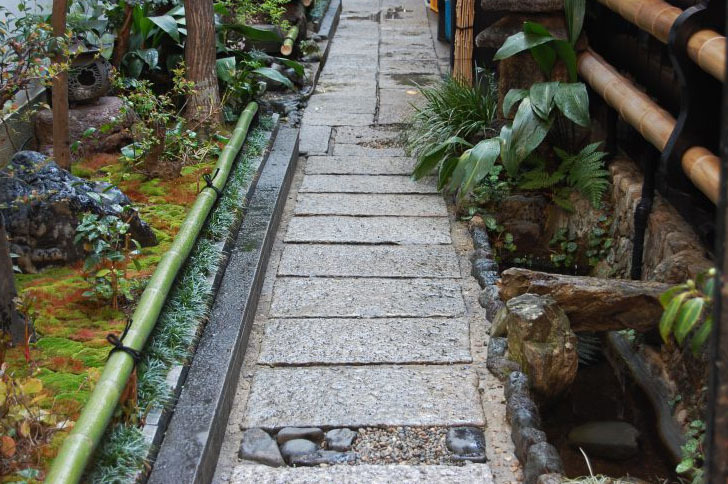
"Poupée De Soie"は、日本では「京都、雨の朝」というタイトルが付けられました。ライナーノーツには以下のように書かれています。ポール・モーリアはコンサートの合間に京都に訪れ休日を楽しみました。朝、苔寺に続く雨で濡れた石畳の道で京美人と出会いました。この作品は、そんな情景を想定して作られました。私には、このことが事実かどうかわかりません。でもタイトルの「絹の人形」が、着物を着た京美人のことであるのは間違い無いでしょう。私は、ポール・モーリアが、この曲に対して琴を使っているということだけでなく、日本らしいメロディを使っている点にもすごいと思います。
"Poupée De Soie" was titled "Kyoto, Rainy Morning" in Japan.The liner notes says: Paul Mauriat visited Kyoto during the concert tour and enjoyed his holiday. In the morning, He met a Kyoto beauty on the cobblestone road wet with rain following the Kokedera. This work was made with such a scene in his mind...
I don't know if this story is true. But there is no doubt that the title "silk doll" is imaged a Kyoto beauty wearing a kimono. I'm surprised that Paul Mauriat not only uses a Koto for this tune, but also uses melody that is conscious of Japan.
<notes>
The official name of the Kokedera is Saihoji Temple."Kokedera" means "moss temple".
You need to make an advance reservation to visit this temple.
http://saihoji-kokedera.com/top.html
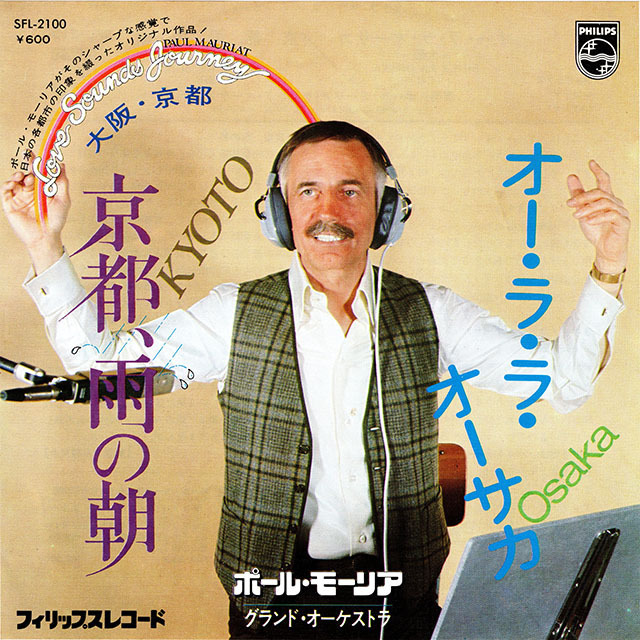
京都も、神戸も、大阪からは、電車で30分程度の近い都市なのですが、それぞれ違う性格の街です。しかし日本では、これらの3つの都市をまとめて、「関西」という地域名で、ひとくくりにしてしまうことがあります。ほぼ50年前に、フランス人のポール・モーリアは3つの都市の違いを描き分けました。 彼が鋭い分析力と豊かな感性を持つ作曲家であることは間違いありません。
Both Kyoto and Kobe are about half an hour by train from Osaka, but they have different characteristics. However, in Japan, these three cities are sometimes grouped together under the name "Kansai". Almost 50 years ago, a Frenchman Paul Mauriat drew the difference between the three cities. There is no doubt that he is a composer with sharp analysis and rich sensitivity.
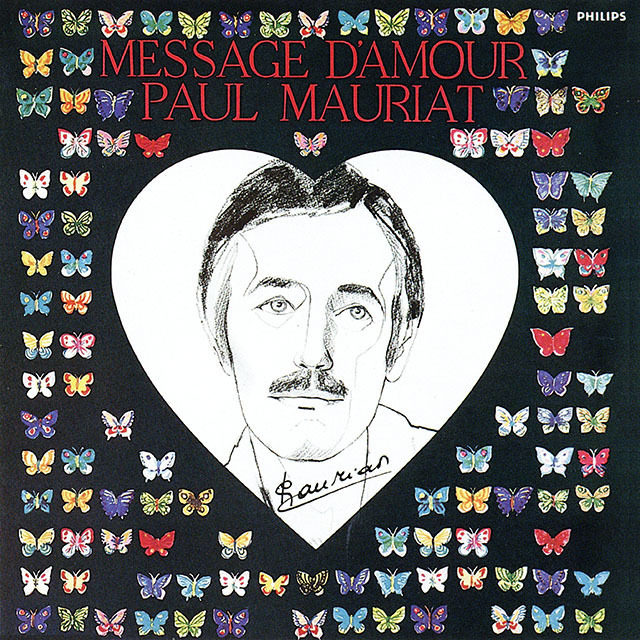
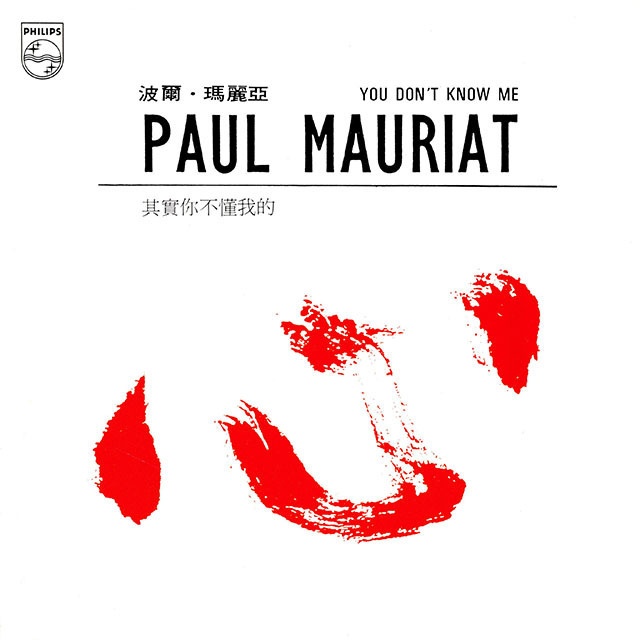
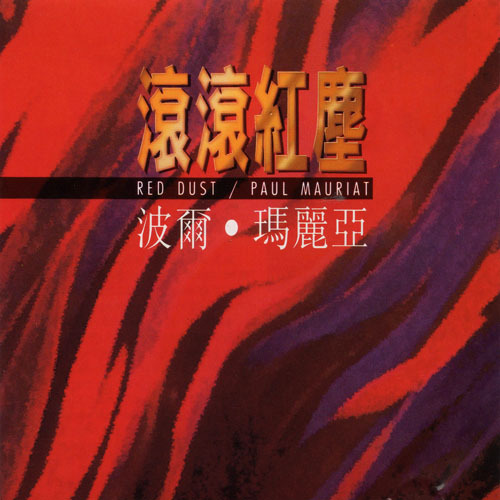
世界中のファンは、日本の曲を演奏し、 森英恵がジャケット・デザインを手がけた "Message D'Amour"のアルバムを期待しているのではないでしょうか。そして、台湾市場向けにリリースされたアルバム "You Don't Know Me"と、アルバム "Emotion"のボーナス・トラックとして収録された "Red Dust"も同様に待ち望まれていることでしょう。楽しみですね。
Now the fans all over the world are expected the release of the album "Message D'Amour", that played Japanese songs and Hanae Mori designed the jacket. And the album "You Don't Know Me" released for the Taiwanese market, "Red Dust" recorded as the bonus track of the album "Emotion" would be also expected. We can't wait it!
ロシアのポール・モーリア・ファン・クラブで、"love Sounds Journey"のことを取り上げたページはこちらです。
Here is a page about "Love Sounds Journey" at Paul Mauliat Fan Club in Russia.
http://fanclub.paulmauriat.ru/love-sound-to-be-continued.html
Thank you, Dmitry Zhoukov!
Special thanks: 川原崎 隆司/Takashi Kawarazaki
[2020.03.29 up date]